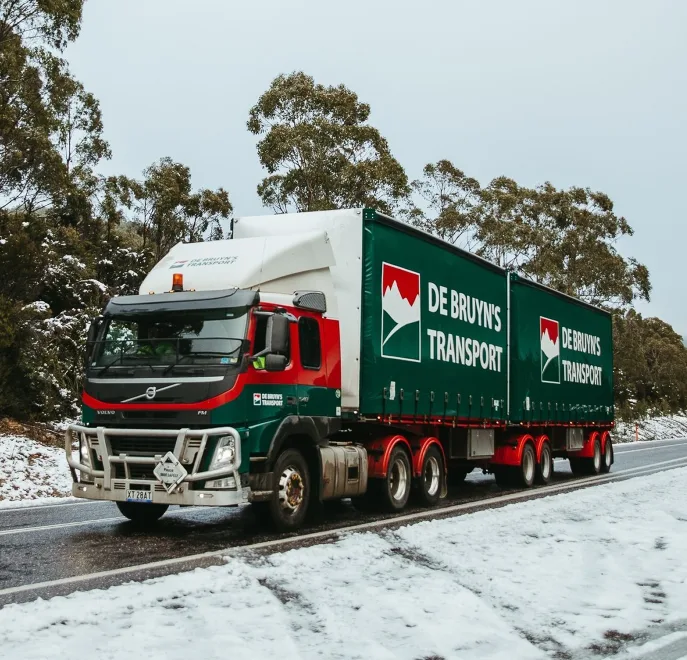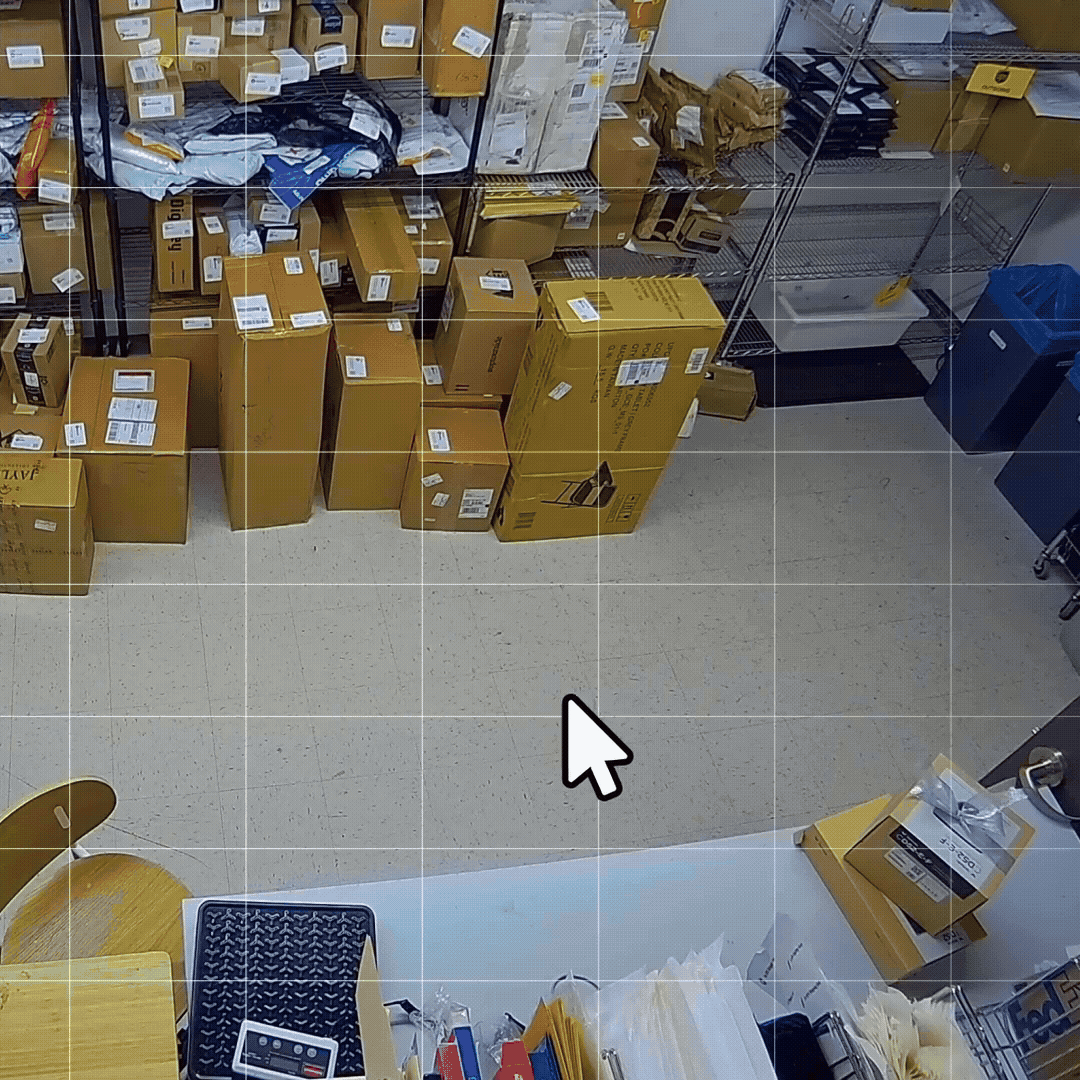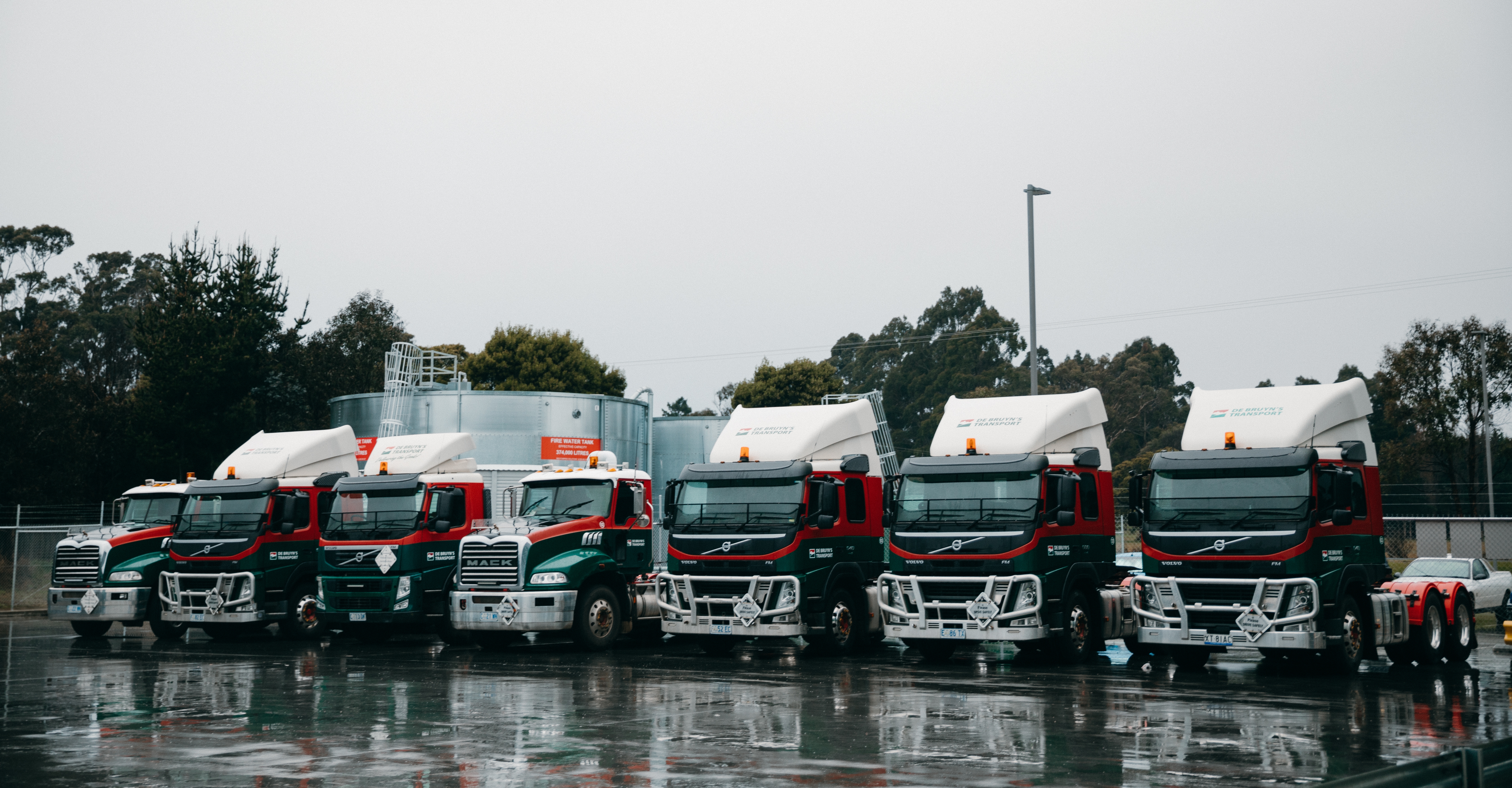De Bruyn’s Transport

A Century of Movement
For more than a century, the De Bruyn family has been in the business of movement. It began in 1910, when their great-great-grandfather bought a 12-ton boat to haul sand, gravel, and heating fuel along the waterways of Holland. Painted green with red and white trims, that boat didn’t just carry cargo — it established the colours that still define the De Bruyn’s Transport brand today.
When Cornelius de Bruyn founded the company in Tasmania in 1965, he carried that same spirit of craftsmanship onto the roads. Today, brothers John and Dirk de Bruyn and their cousin John de Bruyn continue the legacy, operating a fleet that provides general freight, overnight transport services, bulk and specialised dangerous goods movement across the island — built on reliability, family values, and now, modern technology.
As the business expanded, so did the complexity of managing multiple depots, vehicles, and freight operations — each running its own legacy system with little integration between sites.

The Challenge: A Patchwork of Systems
When IT Manager Alex Ives took responsibility for surveillance technology across the depots, one challenge stood out immediately: fragmentation.
“We had everything from consumer-grade cameras to ageing NVRs,” recalls Alex. “Some would drop off the network, others had moisture in them, and several systems came without administrative credentials — so we couldn’t even update firmware or expand storage. It was unreliable and inconsistent.”
These disconnected systems made it difficult to locate footage when required - using legacy access and search methods for retrieving footage for freight enquiries or incidents was time-consuming, if the data even existed. Worse, they introduced cybersecurity risks that were hard for a small IT team to manage.
“We don’t have a team of specialists to babysit firmware updates,” Alex says. “If you need to call contractors every time a patch comes out, it’s slow and expensive. We needed something secure, simple, and centralised.”
The Turning Point: Seeing Verkada in Action
When Alex came across Verkada’s hybrid cloud cameras, the idea of removing NVRs entirely caught his attention — though he was sceptical at first.
“I assumed a system like that would be outside our budget,” he says. “But once we ran a trial, the difference was immediate.”
The trial was placed directly into the hands of depot managers — the people who would actually use the cameras day-to-day. Within days, they were retrieving footage and resolving incidents without IT assistance.
“That’s when we knew it would work,” Alex explains. “We didn’t need to train anyone. The interface made sense, and the cameras just connected and recorded. It was the first time we could see all our sites from one place.”
The 10-year warranty sealed the decision.
“We’ve replaced cameras after just two years with other vendors,” Alex adds. “Knowing we’re covered for a decade changes how we plan our infrastructure.”

Tracking Freight in Minutes — Powered by AI and Motion Search
At a busy freight yard, items move constantly — sometimes thousands per day. Misplaced labels or swapped pallets can lead to costly delays.
With Verkada, the De Bruyn team first began using motion-based search to pinpoint exactly when and where a shipment moved.
“We can draw a box around a section of floor and instantly see thumbnails of every time something changed,” explains Alex. “It’s a simple feature, but it saves hours of scrubbing through footage. You immediately know which truck it went on and who loaded it.”

Now, with AI-powered search, the team can go even further — typing natural-language queries like ‘person loading blue pallet onto truck four’ or ‘white forklift near dock door two’ to instantly surface the most relevant footage.
“It’s like searching Google — but for video,” says Alex. “We can find exactly what we’re looking for in seconds, whether it’s a vehicle, pallet, or employee at a specific location.”

Together, these AI-driven tools help De Bruyn’s reconstruct incidents quickly, resolve customer queries faster, and strengthen accountability across sites — all from a single, unified platform.
Securing Dangerous-Goods Compounds with Smart Access
Beyond tracking freight, the company is modernising access to its depots. At the Launceston site, De Bruyn’s is deploying Verkada Intercom TD63 units integrated with license plate recognition (LPR) cameras.
“Our dangerous-goods and biosecurity compounds need to stay locked, but drivers can’t just hop out to open a gate,” Alex says. “We used to rely on radio tags stuck to windscreens — but every time a windscreen cracked, the tag was gone.”
The new system recognises approved vehicles automatically and routes intercom calls to managers when manual approval is needed. It’s faster for drivers, safer for compliance, and easier to maintain.
“Replacing tags used to cost us time and money,” Alex adds. “Now, if a driver arrives after hours, they can call through, be verified on camera, and the gate opens — all without leaving the cab.”

Effortless Deployment and Long-Term Value
Even first-time contractors found the installation process simple.
“The cameras feel solid, the documentation is clear, and the whole system is intuitive,” Alex notes. “Our installer had never used Verkada before, and he told us, ‘This is fantastic — just leave it with us. They have now signed on to be a Verkada installer/partner.’”
Since deployment, firmware updates and health checks happen automatically in the background, giving the IT team peace of mind that every device stays current and secure.

Results
Find footage in a fraction of the time: AI-powered and motion-based search reduce freight-tracking investigations from hours to minutes.
Stay up to date: Fleet-wide over-the-air (OTA) updates apply firmware and security patches automatically.
Automate access securely: LPR and Intercom provide hands-free, auditable entry for drivers and contractors.
Invest once, protect for a decade: 10-year warranty and cloud storage eliminate recorder maintenance costs.
A Platform Built for the Road Ahead
For Alex, Verkada has become more than just a security upgrade — it’s an operational advantage.
“We started with cameras, but we’re now seeing how the platform supports safety, compliance, and even customer service,” he says. “It’s not just about watching what happens — it’s about helping our people work smarter every day.”
From a 12-ton boat to a statewide freight fleet, De Bruyn’s Transport has always been about movement — of goods, people, and progress. With Verkada, that legacy continues into the cloud era, where visibility, security, and simplicity keep Tasmania moving.
